I just got this in the inbox from author & photographer David Bacon. A really interesting piece on the future of the labor movement in the US. It was originally published at TruthOut.org:
Can Labor Get Out of This Mess?
By David Bacon
TruthOut Perspective, http://www.truthout.org/081109R
For anyone who loves the labor movement, it’s not unreasonable today to ask whether we’ve lost our way. California’s huge healthcare local is in trusteeship, its leading organizing drive in a shambles. SEIU’s international is at war with its own members, and now with UNITE HERE, whose merger of garment and hotel workers is unraveling.
In 1995, following the upsurge that elected John Sweeney president of the AFL-CIO, the service and hotel workers seemed two of the unions best able to organize new members. Their high profile campaigns, like Justice for Janitors and Hotel Workers Rising, were held out as models. Today they’re in jeopardy.
This conflict has endangered our high hopes for labor law reform, and beyond that for an economic recovery with real jobs programs, fair trade instead of free trade, universal health care, and immigration reform that gives workers rights instead of raids. The ability of unions to grow in size and political power is on the line.
Today only 12% of workers belong to unions, and less in the private sector—the lowest level of organization since the years before the great longshore strike of 1934. And falling numbers aren’t the whole story. Some labor leaders now say that only huge deals at the top, far from the control of rank and file workers, can bring in new members on the scale we need. To make those deals attractive to employers, they argue, unions have to be willing to make deep concessions in wages and rights, and in our political demands on everything from single-payer health care to immigration reform.
We need some better ideas about how unions should organize – to rethink even what a union actually is.
Part of our difficulty is that our labor movement, and workers themselves, think about their interests if relatively narrow terms. By comparison with workers in South Africa, El Salvador, or even Mexico and Canada, we are very conservative, and reluctant to see the root of our problems in the system itself, or to talk openly about the need to change it drastically. It is more important than ever that workers see their class interest, but what is that interest? How should we defend it?
Our labor movement has resources and wealth that are enormous by comparison with most unions around the world. But what good is it if we don’t at least use it effectively to defend ourselves, or if it even becomes a brake on our willingness to take risks like those French workers who lock their bosses in their offices, or Mexican workers, who facing the declaration of their strike in Cananea as illegal, have defied and fought it for the last two years?
Over the last four decades, corporations have built an international system of production and distribution that links together the workers of many countries, but in which workers have no control over the expropriation and distribution of the wealth they create. Further, this system has forced devastating and permanent unemployment on entire generations of U.S. workers, especially in African American and Chicano neighborhoods. Meanwhile, neoliberal economic policies displace communities in developing countries, creating a reserve labor force of hundreds of millions, migrating both within and across borders, desperate for work.
Employers have always used the migration of people to this country as a labor supply system. Today that use is more overt than ever. NAFTA alone created such displacement in Mexico that over 6 million Mexican workers and farmers have come here looking for a way to guarantee their families’ survival. Our immigration policy is then used as the means to criminalize, not just their labor, by making it a Federal crime for a worker without papers to have a job, but to criminalize the very status of millions of people, who, like everyone else, have no alternative but to work.
Large corporations, with allies in the administration, among lobbying groups in Washington, and even in our labor movement itself, are now proposing changes that would substitute contract labor programs for family reunification, force all workers to carry a national ID in order to work, and require the firing of millions of workers who can’t get the required “work authorization.”
Our labor movement was organized by immigrants and their children—by people who came from somewhere else. But our unions have been organized in a working class deeply divided by race ad nationality. The key issue confronting our labor movement for the last 180 years is inclusion or exclusion. Today, undocumented immigrants ask, will the unions I paid my dues to defend me when the government tells my boss to fire me because I don’t have papers? It’s not an abstract question. 254 workers at Overhill Farms, fired two months ago in Los Angeles, are asking that question to UFCW Local 770 today.
For unions and workers to survive in this environment, they must demand increasingly radical reforms. Accepting the limits of “what’s politically possible” as defined by Washington insiders, whether they seek to prevent discussion of single-payer or the repeal of employer sanctions, is a recipe for disaster. We cannot defend ourselves if our only goal is to “be at the table.”
Each month for almost a year, over half a million people have lost their jobs. Banks, meanwhile, have been showered with hundreds of millions of dollars to keep them afloat, while working families can’t get their loans renegotiated so they can stay in their homes. Yet there has been no national demonstration called by either labor federation, demanding a direct Federal jobs program or redirecting the bailout to workers instead of the wealthy.
One of the most important reasons why change is so hard for U.S. unions is the continuing legacy of the cold war.
Discussion in labor is difficult because the cold war taught unionists that political differences beyond a limited range would result in marginalization at best, expulsion at worst. You can’t talk freely if you’re afraid for your career or your job. That cold war straightjacket strengthened a hierarchical structure and culture, very different from the egalitarianism in COSATU or Salvadoran unions. We have forgotten the Wobblies’ idea that we’re all leaders, equals among equals. At the same time, unions have accumulated property, treasuries, and political debts, and have an interest in defending them, making institutional needs paramount. We don’t challenge the government out in the streets beyond a certain point because we don’t want to risk not being at the table when the deals affecting our future are made.
Radical ideas and the language to describe them continue to be illegitimate because their suppression has been unacknowledged. After 1995, the prevailing attitude in national leadership was, “We don’t need to rehash the past. Let’s concentrate on where we’re going now.” It’s difficult, however, to determine that new direction if you can’t talk about where the old one was headed, and what was wrong with it. Nowhere is this confusion more evident than in labor’s attitude toward U.S. foreign policy. In Colombia the barriers to solidarity with its leftwing union federation came down, and unions like the Steel Workers became bastions of support for its embattled unionists. Yet next door in Venezuela, U.S. labor supported coup plotters against the radical regime of Hugo Chavez. Under pressure from US Labor Against the War, the AFL-CIO publicly rejected U.S. military intervention in Iraq. Yet the Democratic Party’s support for war in Afghanistan and for Israel’s attack on Gaza is greeted with silence.
Change is always uneven and incomplete, but the change process in U.S. labor has virtually stopped, leaving unions increasingly caught up in internal divisions and conflict. Lacking agreement on how and why the power of unions was undermined by the suppression of the left, there has been no consensus on what should replace the old cold war philosophy.
A deeper understanding (that is, greater class consciousness) can lead to ideas for alternatives, both in radical reforms of the existing system, and even its replacement. This kind of education, part of the normal life of unions in South Africa or El Salvador, requires an investment of time, and a real interest in how workers think. People act autonomously based on their ideas, and workers with greater understanding and consciousness are able to lead themselves and each other, rather than acting solely on directives from above. Further, while education doesn’t necessarily produce immediate mobilizing results, it does treat workers as the people whose thinking, and eventually whose leadership, is the key element in building a union.
The North American Free Trade Agreement caused a huge debate in labor that coincided with the rebellion that brought Sweeney into office. It marked a watershed in the growing awareness among U.S. workers of the impact of globalization, and brought forth important new movements of solidarity, especially between unions and workers in the U.S. and Mexico.
NAFTA and the battle in Seattle at the WTO not only profoundly affected the thinking of workers about the future of their own jobs, but they also set the stage for the huge debate over immigration that followed. Those workers and unions who were educated by the debate were in a much better position to understand the way neoliberal reforms displaced workers and farmers in Mexico, and led to migration across the U.S./Mexico border.
The debate over immigration policy now puts critical questions before U.S. unions. Are unions going to defend all workers (including the undocumented), or just some? Should unions support immigration enforcement designed to force millions of workers from their jobs, so that they will leave the country? How can labor achieve the unity and solidarity it needs to successfully confront transnational corporations, both internally within the U.S., and externally with workers in countries like Mexico?
Understanding that NAFTA hurt workers on both sides of the border is a crucial step in answering these questions, providing the raw material workers need to understand globalization. But raw material is just that. Workers and unions need an education process, and educators, who can help turn that raw material into consciousness and action. In more radical times, leftwing socialist and communist parties played that role of educator. Since this kind of organized left presence in labor is much smaller today, it is unclear what can take its place.
While we try to find organizational answers to these questions, however, we can find ways of trying to use these problems and crises to ask questions of each other, and the workers around us. Perhaps these questions, and our efforts to answer them, can tell us something, not only about the nature of the system, but why we want to change it, and to what.
So here’s a question. Let’s think about the future. If there were not such wide gulfs in the standard of living from country to country – if we had a socialist world, would the migration of people stop? We move and migrate in part because we can. We can get on a plane and travel halfway around the world in a matter of hours. Mexican undocumented workers, living on a hillside under the trees in San Diego, call and check in with their families by cellphone two thousand miles away in a small village in Mexico. And we are more connected than ever before by the bonds of family and friends to people across many borders.
So what does the great liberatory goal of socialism mean to the movement of people? The character of migration under capitalism, especially today, is that it is forced migration, manipulated by the powerful as a labor supply system. So wouldn’t socialism mean that we would do away with the forcible nature of migration, while we also protect the ability of people to move and travel wherever they want, and defend their rights wherever they go?
And the last question – do we have to wait for socialism to move toward this goal? Is it possible to end forcible migration and protect the rights of migrants under capitalism? Is this system capable of such a radical reform?
And of course the answer is, it depends on us.
image: Josh MacPhee, Labor Creates All Wealth, 2007
Can Labor Get Out of This Mess?
August 15, 2009
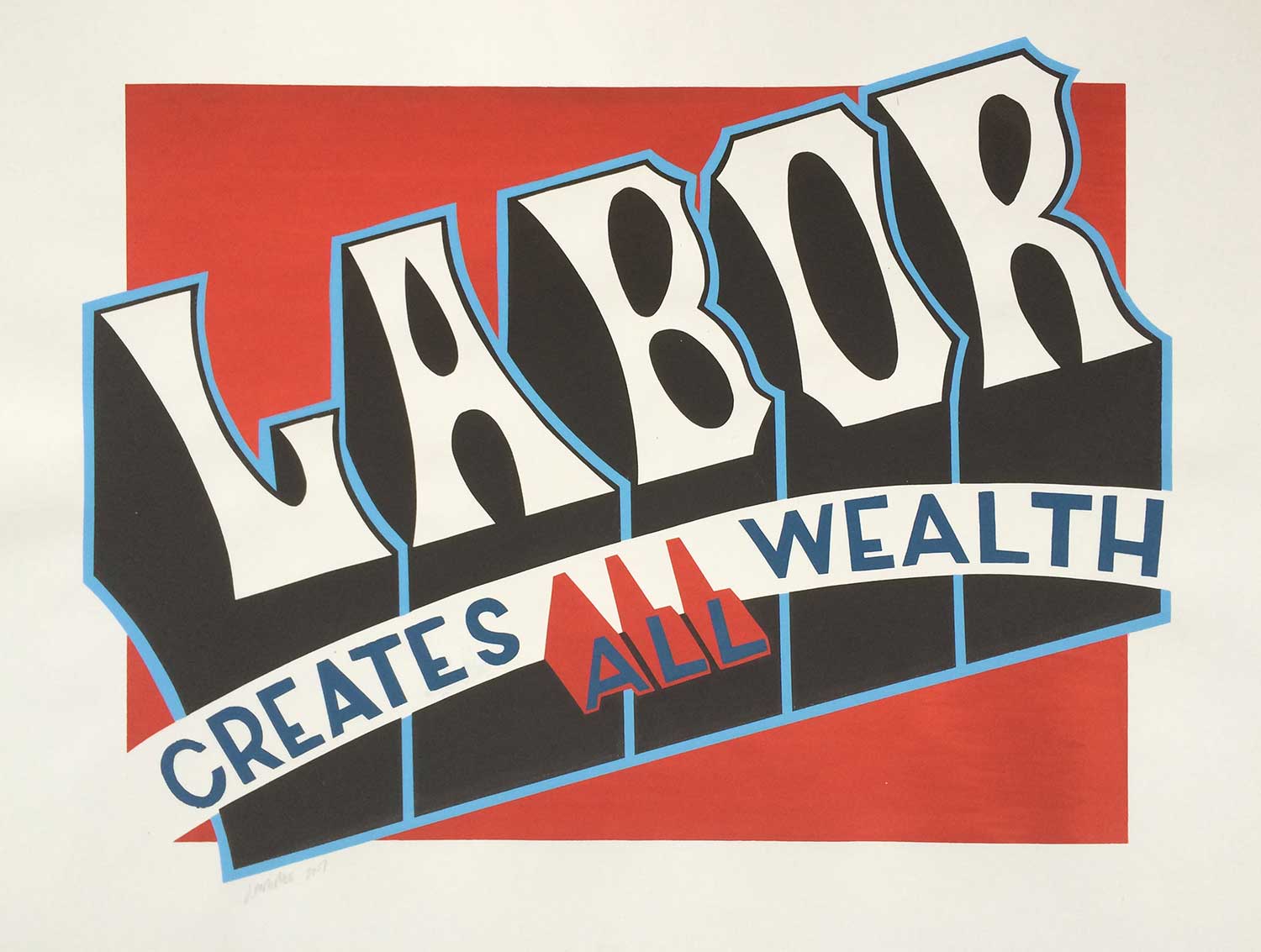

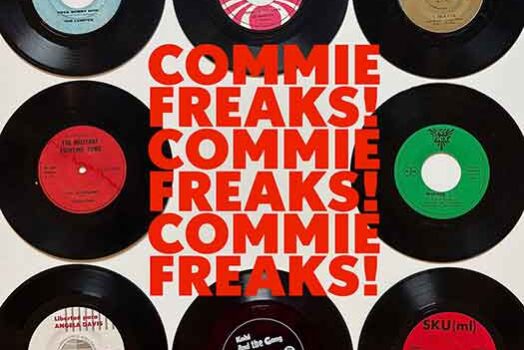
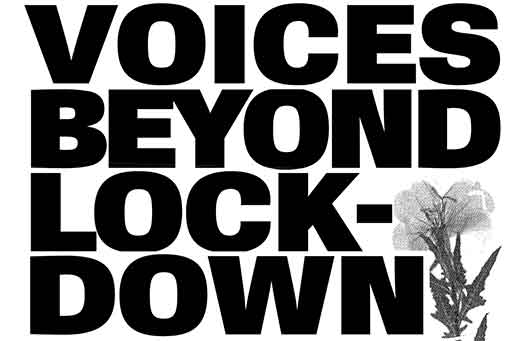


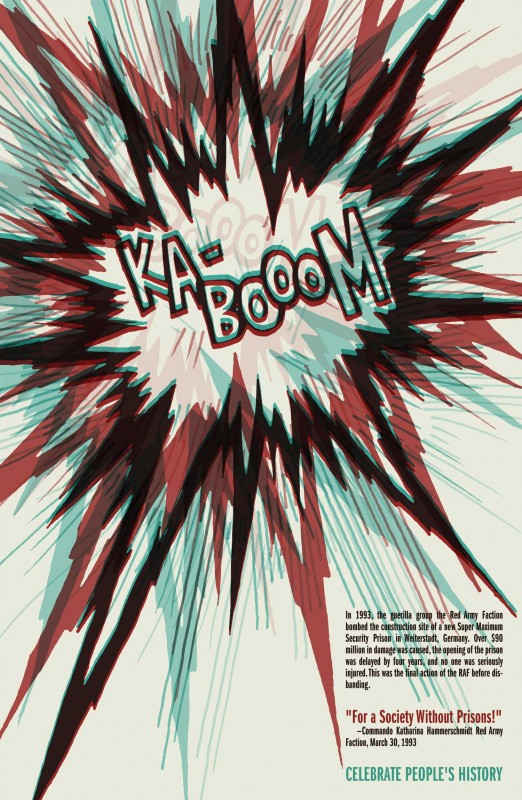
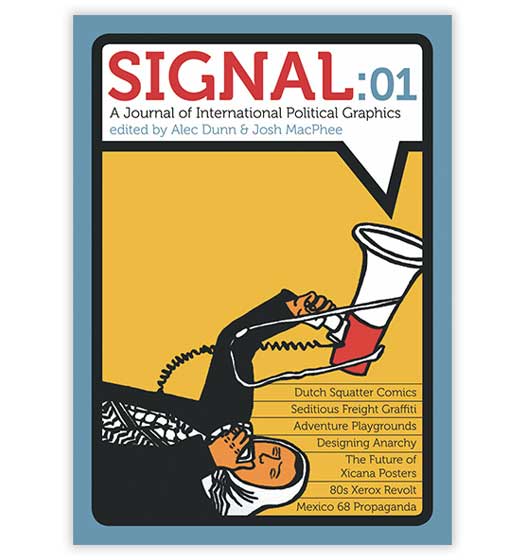

Unless we dismantle civilization, end agriculture, and bring human population back down to about 5 million worldwide, all dreams of Socialism etcetera will remain moot. Bigger cages, Longer chains! Humanity is a biological phenomenon and requires a biological solution. Culture just won’t cut it, and nor will hope.